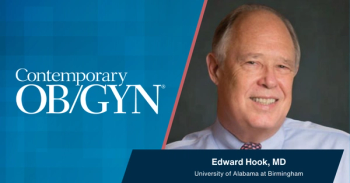
Postmortem ultrasound accurately estimates gestational age
A new study shows extrauterine cerebellar ultrasound is a reliable, low-cost method to assess gestational age after fetal or neonatal death, especially in low-resource settings.
Extrauterine ultrasound measurements of the cerebellum are feasible and accurate for evaluating postmortem gestational age (GA), according to a recent study published in the American Journal of Obstetrics & Gynecology.1
Need for innovative postmortem GA assessment
Although better quality care can be provided by identifying sources of perinatal death, low- and middle-income countries (LMICs) have reported slow reductions in perinatal mortality. Complete autopsies are traditionally utilized to determine the cause of death, but this method remains difficult to perform in LMICs.2
“Thus, there is an urgent need for innovative approaches allowing accurate evaluation of GA in a cost-effective and feasible manner,” wrote investigators.1
Ultrasound as a tool for gestational age evaluation
Ultrasound may be utilized to measure the cerebellum as early as 10 to 11 weeks’ gestation. Therefore, this method has been proposed as a tool to evaluate GA.
The observational cross-sectional study was conducted to determine the feasibility of extrauterine percutaneous transfontanelle ultrasound cerebellum measurements for estimating postmortem GA. This included fetal deaths, stillbirths, and neonatal deaths.
Deaths occurring from 15 to 21.9 weeks’ gestation were considered fetal deaths, while those occurring from 22 weeks’ gestation onward were considered stillbirths. Participants were patients with intrauterine fetal death from natural causes or legal abortion after 15 weeks’ GA, neonatal death within 48 hours of birth, or regular ultrasound scan controls.
Validation and measurement methods
Extrauterine postmortem ultrasound cerebellar measurements were validated through comparisons with intrauterine ultrasound postmortem measurements and autopsy measurements of the cerebellum. Accuracy in assessing GA was also measured.
Routine pregnancy assessments included an intrauterine ultrasound scan, allowing potential fetal abnormalities to be identified. Crown-rump length was measured to estimate GA. Fetal death was confirmed through abdominal ultrasound in cases of suspected intrauterine fetal death.
Cerebellar measurements obtained during extrauterine postmortem cerebellar ultrasound included transcerebellar diameter (TCD), cranio-caudal length of the cerebellar vermis, and anteroposterior length of the cerebellar vermis. A trained pathologist or pathology technician performed all measurements.
Measurement accuracy
There were 137 cases included in the final analysis, 63% of whom were fetal deaths, 50.4% stillbirths, and 3.6% neonates. Median GAs among these populations were 20.5 weeks, 23 weeks, and 28.5 weeks, respectively. Neonates had a median life of 12 hours, and 84.7% of cases underwent a complete autopsy.
Approximately 76% of deaths were legal abortions, while approximately 24% were linked to natural causes. Median TCD values were 20.8 mm from intrauterine ultrasound and 23.7 mm from extrauterine ultrasound. When measuring by extrauterine ultrasound followed by direct examination of formalin-fixed cerebellums, medians were 25.1 mm and 25 mm, respectively.
Correlation between ultrasound and autopsy measurements
Extrauterine ultrasound TCD, intrauterine ultrasound TCD, and autopsy TCD were significantly correlated, with a correlation coefficient between 0.81 and 0.87. Average TCD values were lower from intrauterine ultrasound vs extrauterine ultrasound and autopsy, with mean bias values of 2.67 mm and 3.61 mm, respectively.
In comparison, similar TCD measurements were reported for extrauterine ultrasound and autopsy, with a mean bias value of 0.55 mm. All cases had successfully measured extrauterine postmortem TCD, and 98.5% had successfully measured cerebellar vermis height and length.
Both intrauterine ultrasound TCD and autopsy TCD displayed excellent GA prediction in univariate linear regression. A significant positive linear relationship was also noted between all 3 extrauterine postmortem cerebellar ultrasound measurements and GA. This highlighted the feasibility of estimating GA with postmortem extrauterine cerebellar ultrasound measurements.
“Future studies should validate our findings and feasibility in larger and more diverse cohorts, particularly those in LMICs,” wrote the investigators.
References
- Peñuelas N, Saco A, Marimón L, et al. Gestational age assessment by ultrasound cerebellar measurements in fetal and perinatal deaths. Am J Obstet Gynecol. 2025;232:559.e1-10. doi:10.1016/j.ajog.2024.11.016
- Bassat Q, Ordi J, Vila J, et al. Development of a post-mortem procedure to reduce the uncertainty regarding causes of death in developing countries. Lancet Glob Health. 2013;1(3):e125-6. doi:10.1016/S2214-109X(13)70037-8
Newsletter
Get the latest clinical updates, case studies, and expert commentary in obstetric and gynecologic care. Sign up now to stay informed.










